
|

|
|
Home Site Search Contact Us Subscribe
|
|
Venice in Three Parts - Part 3 There are treasures and treats to be found beyond the confines of the Giardini della Biennale. By Julie D. Taylor, Hon. AIA October 4, 2018 Part 1: As a first-timer to La Biennale di Venezia, I was awed, delighted, and enchanted at the spectacle of architecture in so many expressions.
Part 2: There were three distinct types of displays at this year's La Biennale di Venezia: immersive experiences, artistic expressions, and marketing efforts. Guess which are most satisfying?
AROUND TOWN
Neo-Neo Modernism
Within the huge “Time-Space-Existence” exhibition at the Palazzo Mora, Form4 Architecture (San Francisco) introduces a new outlook on the profession with “2nd Century Modernism.” Posited as a response to 1st Century Modernism’s dogmatic austerity, 2nd Century Modernism explores balancing the rational with the intuitive to create an architecture of abundance, richness, and community,” explains Form4 Co-Founding Principal and Chief Artistic Officer John Marx, AIA. On exhibit are an interpretive timeline of movements and meanings, visual poems combining enigmatic collages with provocative text, and project designs that showcase the spirit and lyrical nature of the firm’s work. “As architects, we aim to explore fluid dynamics in architecture while providing work that is contextually relevant, humane, and moving,” adds Marx. “This poetic installation expresses our design philosophy and resonates with those who struggle to give creative clarity to themselves and others.” A printed manifesto called “The Absurdity of Beauty: Rebalancing the Modernist Narrative” (published by The Architectural Review) expands on these concepts.
Holy Moly!
As a first-time exhibitor, the Holy See goes big with 10 full-size “Vatican Chapels” by a roster of international architects on the island of San Giorgio Maggiore. Actual chapels, each small building contains the requisite pulpit and altar. The “design problem” of incorporating the cross itself was beautifully solved in many clever ways. From divine sublimity to intellectual abstraction to visceral materiality and religious allegory, theses structures – though obviously denominational – transcend into the realm of the truly catholic (with lower-case “c”). My faves: ● “No, It Is Not...” by Eduardo Souto de Moura, Hon. FAIA (Porto, Portugal): Oh, yes, it is! The most effective and gasp-inducing of the projects is also the most essential expression of form meshing with content that I’ve experienced in a long time. A seemingly simple, all-stone structure has no obvious destination at the entrance. Turning the corner leads into a small space where light streams through the gap in the partial roof to softly or harshly bathe the back wall, depending on the time of day. With subtle brilliance, this Pritzker Prize winner uses the attributes of the material to convey necessary iconography. Prepping us with visible lines where stone meets stone, the architect elevates expected seams to a vaulted state. Directly in view – though, at mercy of the light, sometimes challenging to discern – is the cross limned by a vertical seam and horizontal incising. So obvious and inventive at the same time. ● “Cross Chapel” by Terunobu Fujimori (Tokyo): Rustic beams and charred wood on the exterior of a barn-like A-frame support a narrow door leading into a white interior centered on the cross. Make that cross beams. Gold leaf on the beams defines a cross, while bits of charcoal are imbedded in the wall – all bathed in light streaming in from either side. ● “Terma” by Andrew Berman (New York City): Strikingly graphic in its simplicity, a black and polycarbonate shed structure holds a simple raw-wood bench within a shadow box-like recess that looks out onto the nature of the island. Smaller perches are inside. At a certain moment, the intersection of black and natural plywood struck me with the same awe I felt upon seeing James Turrell’s “First Light” aquatints. ● “Not a Project: A Reflexion” by Francesco Cellini (Rome): The importance of The Word is showcased as the central focus of an open-air structure comprising two intersecting volumes. Elemental in shape and color, the chapel floats lightly on the ground and holds an elegant abstraction of the Good Book at its center. ● “Crosses Morphed Into a Tensegrity Structure” by Norman Foster, Hon. FAIA (London): This lovely space of humble timbers rests in harmony with the wooded landscape. Not usually a Foster fan, I was entranced by this constructed walk in the woods under dappled light.
Ephemerally Exhibiting the Permanent
This ephemeral exhibition of the most eternal of expressions is an ode to both the effervescence of water and the permanence of friendship. Held at Fondazione Emilio e Annabianca Vedova, designed by Renzo Piano, Hon. FAIA (Genoa, Italy), “Renzo Piano: Projetti d’acqua” features eight projects connected to water. Opening the exhibition is one of many collaborations between Piano and his dear friend, the late artist Emilio Vedova. The installation, designed by Studio Azzurro, seduces you into total immersion through hanging scrims, projections, and videos. Layers of imagery – photographs, architectural drawings and sketches, water, sea life – emerge and submerge within a soundscape of bird, water, and whale sounds. It’s a magical space to evoke an emotional, rather than critical, reaction to architecture and nature. Periodically, all screens flood with rushes of water, almost like a palate cleanser for the senses. [short video]
Julie D. Taylor, Hon. AIA, is West Coast correspondent for ArchNewsNow.com. She is principal of Taylor & Company, a public relations firm championing the profession of architecture, and was 2014-2016 Public Director on the AIA National Board.
Also by Taylor:
Throughout "Frank Gehry" at the Los Angeles County Museum of Art, the repeated and insistent message is that his work "distinguished him as an urbanist," as if trying so hard to convince us that it's true. The curator doth protest too much.
Delight & Design: "Provocations: The Architecture and Design of Heatherwick Studio" Wonder and joy pervade the exhibition and enchant its viewers. Skip - don't walk - to experience it.
Drawing an Elegant Conclusion: Menil Drawing Institute by Johnston Marklee Houston: In the somewhat arbitrary hierarchy of fine art media, where painting is king, drawing is often considered less valuable. The new MDI elevates the medium by providing a distinguished, respectful home.
The Julia Morgan-designed Asilomar Conference Grounds in Pacific Grove, CA, will be abuzz at the biennial event September 27-29, 2013.
The Blob That Could Eat Los Angeles The history of our ill-fated Los Angeles County Museum of Art is told in "The Presence of the Past: Peter Zumthor Reconsiders LACMA": I'm a fan of Zumthor, but this building could be cool almost anywhere else.
Overdrive: L.A.'s Future is Present in its Past Simultaneously hopeful and wistful, The Getty Museum's exhibition is about the evolution of a modern city seen through its architecture, confirming the truly layered nature of Los Angeles. |
(click on pictures to enlarge) 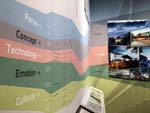 Form4 Architecture “2nd Century Modernism” by Form4 Architecture 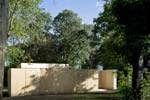 Alessandra Chemollo “No, It Is Not...” by Eduardo Souto de Moura 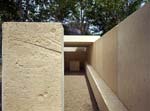 Alessandra Chemollo “No, It Is Not...” by Eduardo Souto de Moura 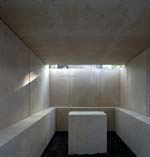 Alessandra Chemollo “No, It Is Not..." by Eduardo Souto de Moura 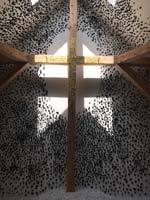 Julie D. Taylor, Hon. AIA “Cross Chapel” by Terunobu Fujimori 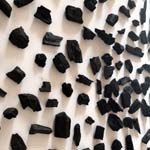 Julie D. Taylor, Hon. AIA “Cross Chapel” by Terunobu Fujimori 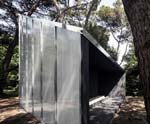 Alessandra Chemollo “Terma” by Andrew Berman 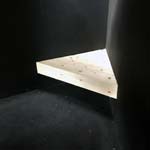 Julie D. Taylor, Hon. AIA “Terma” by Andrew Berman 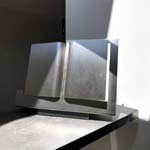 Julie D. Taylor, Hon. AIA “Not a Project: A Reflexion” by Francesco Cellini 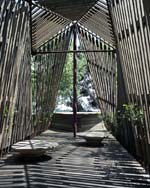 Alessandra Chemollo “Crosses Morphed Into a Tensegrity Structure” by Norman Foster 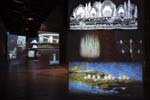 Fondazione Emilio e Annabianca Vedova “Renzo Piano: Projetti d’acqua” 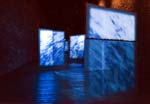 Fondazione Emilio e Annabianca Vedova “Renzo Piano: Projetti d’acqua” |
© 2018 ArchNewsNow.com